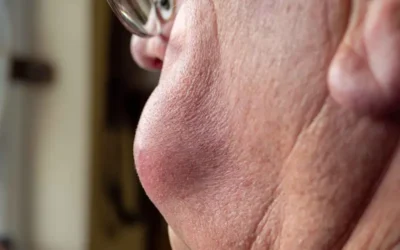Since there are several changes and expansion introduced to the musculoskeletal code system in ICD-10, it will be a real challenge to code for musculoskeletal disease treatment under the new coding structure. In order to assign the correct code, the diagnosis of the patient should be reported to the highest level of specificity with the documentation of site and laterality, more specific information should be provided regarding fractures and injuries, identification of episode of care and additional information regarding osteoporosis. There are also significant changes in coding for admission into rehabilitation centers and surgical technique including spinal fusion, if necessary. Let’s consider this in detail.
Osteoarthritis
Unlike ‘localized’ and ‘generalized’ classifications used in ICD-9, sub-classifications of primary, secondary, post-traumatic, and generalized (different from ‘generalized’ in ICD-9) are used in ICD-10.
* M16.0: Bilateral primary osteoarthritis of hip
* M16.2: Bilateral osteoarthritis resulting from hip dysplasia
* M16.4: Bilateral post-traumatic osteoarthritis of hip
* M16.6: Other bilateral secondary osteoarthritis of hip
The significant change that affects billing claims is that ICD-10 considers laterality when it comes to the diagnosis and treatment of osteoarthritis. For example, the ICD-10 code for ‘Unilateral primary osteoarthritis of hip’ is M16.1. But there are different codes for unspecified, right and left hip.
* M16.10: Unilateral primary osteoarthritis, unspecified hip
* M16.11: Unilateral primary osteoarthritis, right hip
* M16.12: Unilateral primary osteoarthritis, left hip
So, if the provider misses out the information about laterality, it may lead to coding errors and claim denials.
Fractures
The new coding system identifies laterality in the case of fractures also. Let’s take the example of pathologic fracture of shoulder. Here are the ICD-10 codes for that.
* M84.41: Pathological fracture, shoulder
* M84.411: Pathological fracture, right shoulder
* M84.412: Pathological fracture, left shoulder
The episode of care information is very important when selecting fracture codes. There are specific codes for different types of encounters, healing type, union and malunion.
* M84.411: Pathological fracture, right shoulder
* M84.411A: Pathological fracture, right shoulder, initial encounter for fracture
* M84.411D: Pathological fracture, right shoulder, subsequent encounter for fracture with routine healing
* M84.411G: Pathological fracture, right shoulder, subsequent encounter for fracture with delayed healing
* M84.411K: Pathological fracture, right shoulder, subsequent encounter for fracture with nonunion
* M84.411P: Pathological fracture, right shoulder, subsequent encounter for fracture with malunion
* M84.411S: Pathological fracture, right shoulder, sequela
Osteoporosis
The ICD-9 codes for osteoporosis are as follows.
* 733.0: Osteoporosis
* 733.00: Osteoporosis, unspecified
* 733.01: Senile osteoporosis
* 733.02: Idiopathic osteoporosis
* 733.03: Disuse osteoporosis
* 733.09: Other osteoporosis
With ICD-10, addition information regarding osteoporosis is required such as if fracture present or not. The codes are as follows.
M80: Osteoporosis with current pathological fracture
M81: Osteoporosis without current pathological fracture
M81.0: Age-related osteoporosis without current pathological fracture
M81.6: Localized osteoporosis [Lequesne]
M81.8: Other osteoporosis without current pathological fracture
If there is fracture, more details including site, laterality and episode of care are needed.
* M80.01: Age-related osteoporosis with current pathological fracture, shoulder
* M80.011: Age-related osteoporosis with current pathological fracture, right shoulder
* M80.011A: Age-related osteoporosis with current pathological fracture, right shoulder, initial encounter for fracture
* M80.011D: Age-related osteoporosis with current pathological fracture, right shoulder, subsequent encounter for fracture with routine healing
* M80.011G: Age-related osteoporosis with current pathological fracture, right shoulder, subsequent encounter for fracture with delayed healing
* M80.011K: Age-related osteoporosis with current pathological fracture, right shoulder, subsequent encounter for fracture with nonunion
* M80.011P: Age-related osteoporosis with current pathological fracture, right shoulder, subsequent encounter for fracture with malunion
* M80.011S: Age-related osteoporosis with current pathological fracture, right shoulder, sequela
Spinal Fusion
The ICD-9 coding system provides no options for the approach for spinal fusion, presuming it as open.
* 81.0: Spinal fusion
* 81.00: Spinal fusion, not otherwise specified
* 81.01: Atlas-axis spinal fusion
* 81.02: Other cervical fusion of the anterior column, anterior technique
* 81.03: Other cervical fusion of the posterior column, posterior technique
* 81.04: Dorsal and dorsolumbar fusion of the anterior column, anterior technique
* 81.05: Dorsal and dorsolumbar fusion of the posterior column, posterior technique
* 81.06: Lumbar and lumbosacral fusion of the anterior column, anterior technique
* 81.07: Lumbar and lumbosacral fusion of the posterior column, posterior technique
* 81.08: Lumbar and lumbosacral fusion of the anterior column, posterior technique
On the other hand, ICD-10 identifies percutaneous, percutaneous endoscopic and open approaches.
* 0RG0070: Fusion of Occipital-cervical Joint with Autologous Tissue Substitute, Anterior Approach, Anterior Column, Open Approach
* 0RG0370: Fusion of Occipital-cervical Joint with Autologous Tissue Substitute, Anterior Approach, Anterior Column, Percutaneous Approach
* 0RG0470: Fusion of Occipital-cervical Joint with Autologous Tissue Substitute, Anterior Approach, Anterior Column, Percutaneous Endoscopic Approach
The other differences of the new coding system from the existing coding system are as follows.
* In the ICD-10 coding system, the spinal column is divided into upper and lower joints with the lumbar spine beginning the lower joints section. Lumbar joints are separated from lumbosacral joints, which are classified together in the new coding system. Spinal levels involved in the spinal fusion should be documented correctly as each spinal level will require a separate code in ICD-10.
* It is very important to document the type of device used in the fusion for coding in the new system as it will impact the device character. The surgeon should document whether the graft is autologous or non-autologous, and if bone graft material is used. If an autologous graft is used, it is required to document the harvesting as local or specify whether a separate location was harvested. It is because the separate harvesting would be coded in addition to the spinal fusion in the new coding system.
Admission to Rehabilitation
In case of ICD-9 coding system, the diagnosis was used as the principal diagnosis for inpatient rehabilitation (V57.89) while the coder will be required to assign the code for the reason for the rehab as the principal diagnosis in ICD-10. Since the new coding guideline will assist in the validation of medical necessity, it will affect claims processing. As the reasons for rehabilitation will become clearer, it will assist in the further development of inpatient rehab facility prospective payment system. The MS-DRG for rehabilitation is triggered by the use of physical, occupational, and speech procedure codes (ICD-10-PCS), and this is a change from the MS-DRG method. If these procedures are not coded in ICD-9-CM, a MS-DRG shift will be noticed when converting claims data. when preparing for ICD-10 implementation, medical facilities should discuss and decide whether these procedure codes are needed.




